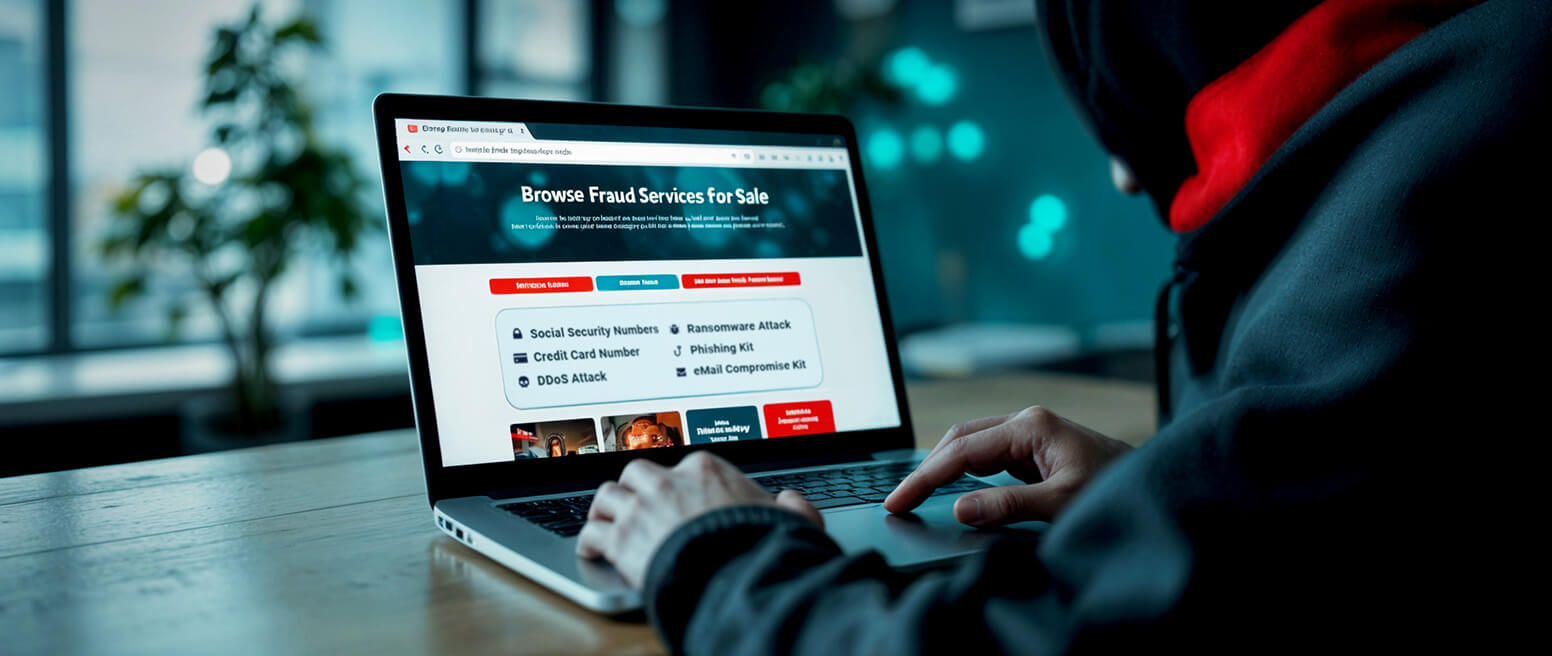How Money Laundering Works & How You Can Insulate Your Business Against Liability
With global eCommerce sales predicted to reach $7.5 trillion dollars by 2026, the vast and ever-expanding digital marketplace offers unparalleled opportunities for merchants and consumers alike. However, this immense growth comes with its own set of challenges. For instance, the increased risk of being implicated in money laundering.
In the vast and intricate ecosystem of online trade, fraudsters find it easier to blend in. This is crucial because, at its core, money laundering is about making illegal gains appear legal.
Money launderers have taken to leveraging the anonymity and speed that eCommerce platforms can provide. For digital businesses, staying ahead of these threats is no longer just a matter of regulatory compliance. Now, it's about preserving customer trust and safety.
Recommended reading
- What is Wire Fraud? How it Works | Examples | How to Avoid
- The Top 10 Prepaid Card Scams to Watch Out For in 2025
- How do Banks Conduct Credit Card Fraud Investigations?
- Fraud as a Service: How it Works | Examples | Detection
- How Triangulation Fraud Works | Red Flags & How to Prevent
- Coupon Scams | Common Tactics & High-Profile Examples
What is Money Laundering?
- Money Laundering
Money laundering is an illegal practice whereby individuals take funds acquired through criminal activity and attempt to disguise the origins of their funds. They achieve this by moving money through an intricate system of transfers, transactions, and shell businesses.
[noun]/mon • ē • lon • dər • iNG/One significant challenge faced by organized criminal operations, like drug trafficking rings, is moving vast sums of money without drawing attention from legal authorities. Such sizable amounts are problematic not only because of potential legal investigations but also due to significant tax implications if declared as income.
Reporting millions of dollars in income, but being unable to say where that money came from, would obviously raise red flags. So, criminal groups engage in money laundering. in response to the challenge of legitimizing funds obtained from unlawful activities. The goal is to cloak the illegal origins of the money and integrate it into mainstream financial systems, like banks or legitimate-looking businesses.
In effect, money laundering lets criminals “wash” their dirty money. By diverting it through multiple pass throughs, they can make it look like authentic business earnings, and then spend that money freely as if it were legitimate.
How Does Money Laundering Work?
Money laundering becomes extremely important for criminal entities aiming to use or keep any of their illicit funds. Managing vast sums of illegal cash directly is both impractical and bound to attract the attention of regulators and law enforcement.
The key to laundering money is subtly feeding it into recognized financial establishments and businesses, ensuring it appears to have a legitimate origin. This camouflaging process typically unfolds in three stages:
1. Placement:
This step discreetly channels the “dirty money” into the legitimate financial sphere.
2. Layering:
A web of transactions and accounting maneuvers are employed to mask the money's origin.
3. Integration:
In this culminating phase, the now-sanitized funds are extracted from the account, and can be spent like any legitimate funds.
This three-stage blueprint provides a very basic overview. However, real-world scenarios might differ. Not all stages might be present or overlap or even recur multiple times. After all, these scammers need to constantly switch up their methods and innovate to avoid detection by law enforcement.
Laundering techniques range from straightforward to cinematically elaborate. One method involves the operation of legitimate, cash-oriented businesses under the criminal organization's purview. The business is used as a front, and the criminal proceeds are reported as income from the business.
Think about the A1A Car Wash from Breaking Bad. The owners simply inflated the number of cars they serviced daily for reporting purposes, then funneled illegal cash into the business's revenue.
Different Forms of Money Laundering
Money laundering is a multifaceted crime, with various methods employed by criminals. While the foundational process generally adheres to the three stages mentioned above, there are dozens of specific techniques that criminals may use.
Some of the most common money laundering tactics include:
It's worth noting that criminals often use a combination of these methods to enhance the obfuscation of illicit funds. As anti-fraud technology and regulation become more sophisticated, so do the techniques employed by criminals.
How Much of a Threat is Money Laundering?
Frankly, money laundering is a huge problem.
According to the UN, the estimated amount of money laundered globally each year is somewhere between 2-5% of global GDP. In other words, approximately $800 billion to $2 trillion every 12 months.
For a deeper look at the impacts of money laundering across the globe, check out some of the following stats and figures on th practice:
Top 10 Money Laundering Red Flags for Merchants
Merchants play a pivotal role in the financial ecosystem. Understanding money laundering red flags can prevent them from inadvertently facilitating illicit activities. However, most merchants need support in this regard.
Financial institutions should be on the lookout for common red flags associated with money laundering. Not only will due diligence help stop criminals, it could also protect merchants that are being used as pass-through businesses without their knowledge.
Here are the top 10 red flags that FIs and merchants should be on the lookout for:
Frequent Large Cash Transactions
Consistent large cash deposits or purchases can indicate an attempt to introduce “dirty money” into the system.Rapid Movement of Funds
Multiple rapid transfers between accounts, especially across different banks or countries, can be a sign of the “layering” phase of money laundering.Mismatched Invoices
Inconsistencies between invoiced amounts and actual payments can signal trade-based laundering.Complicated Orders
Orders that seem unnecessarily complex or convoluted may be an attempt to confuse or obfuscate transaction trails.Consistent International Transactions
Regular, large transactions from international clients, especially from high-risk jurisdictions, can be concerning.Suspicious Transaction Volume
Transactions that don't align with a business's typical volume or nature can be a sign of illicit activities.Frequent Refunds or Cancellations
High rates of returns or transaction cancellations followed by immediate repurchases can indicate layering attempts.Generic Identifiers
Transactions involving pseudonyms, generic email addresses, or unregistered prepaid cards can signal an attempt to hide identity.Purchase of High-Value Goods
Buying expensive items, especially when inconsistent with the customer's profile, can be a method to integrate laundered money.Unusual Hours
Transactions conducted outside typical business hours may be done as an attempt to avoid scrutiny.How to Prevent Money Laundering
Merchants, particularly those operating in sectors with a high volume of financial transactions, must be vigilant against inadvertently facilitating money laundering.
Implementing robust anti-money laundering procedures, alongside Know Your Customer (KYC) processes, is crucial. Customer identification through KYC could involve collecting and verifying details such as names, addresses, and other identification details.
Of course, that’s just the first step. Here are several other measures that business can take to avoid getting caught up in money laundering schemes:
| Monitor Transactions
Use automated systems to detect suspicious patterns, like a series of high-volume transactions, frequent large cash payments, or irregular international transactions.
| Limit Cash Transactions
If you have a brick-and-mortar operation, set a maximum limit for cash transactions. For high-ticket transactions, encourage payment methods that leave a digital trail.
| Maintain Detailed Records
Keep accurate and comprehensive records of all transactions for at least five years. Many jurisdictions require records this far back for AML compliance.
| Employee Training
Regularly train employees to recognize signs of money laundering and to be familiar with the store's AML policies and procedures.
| Due Diligence With Business Partners
Before entering into any partnerships, conduct a thorough background check on businesses and individuals to ensure they are legitimate.
| Report Suspicious Activity
Have a clear procedure for employees to report any suspicious activities. In many jurisdictions, reporting suspicious transactions to financial intelligence units or other relevant authorities is legally required.
| Conduct Regular Audits
Periodically review and audit your business processes and transactions to ensure compliance with AML policies and to identify any potential vulnerabilities.
| Keep Up With AML Regulations
AML regulations can vary by country and region and evolve over time. Ensure you're familiar with the latest regulations applicable to your location and industry.
Money laundering affects everyone, from banking institutions to everyday consumers. It destabilizes economies, aids criminal enterprises, and even indirectly funds some of the gravest global threats, such as terrorism.
As the bridge between production and consumption, merchants occupy a unique position and bear a significant responsibility. They must actively foster a culture of compliance and place transaction security at the forefront of their operations. This way, merchants can make it exponentially harder for money launderers to exploit the financial system, thereby protecting their customers and community.
FAQs
What is money laundering?
Money laundering is the illegal process of making large amounts of money generated by criminal activities, such as drug trafficking or terrorist funding, appear to be earned legally. It involves disguising the sources, changing the form, or moving the funds to a place where they are less likely to attract attention.
What is considered as money laundering?
Money laundering involves disguising the origins of illegally obtained money to make it appear as if it comes from legitimate sources. This is typically achieved through a sequence of complex transactions or financial maneuvers designed to obscure the initial source.
What are the three categories of money laundering?
The three stages of money laundering are placement, where illicit funds are introduced into the financial system; layering, where these funds undergo a series of complex transactions to disguise their origin; and integration, where the “cleaned” money is reintroduced into the economy as legitimate assets.
What is the most common way money is laundered?
The most common way money is laundered involves using a legitimate, cash-intensive business to disguise illicit funds by blending them with legitimate earnings. This “cleaned” money is then deposited into banks or used for legitimate transactions, making it difficult to distinguish it from legal profits.
How can you tell if someone is money laundering?
Detecting money laundering often involves identifying suspicious financial patterns, such as large, frequent cash deposits, complex series of rapid transfers across multiple accounts, or transactions that don't align with a person's or business's typical activity. Inconsistencies between a person's or entity's reported income and their spending or investment behaviors can also raise red flags. These anomalies can signal that funds are being "cleaned" through illicit means.















